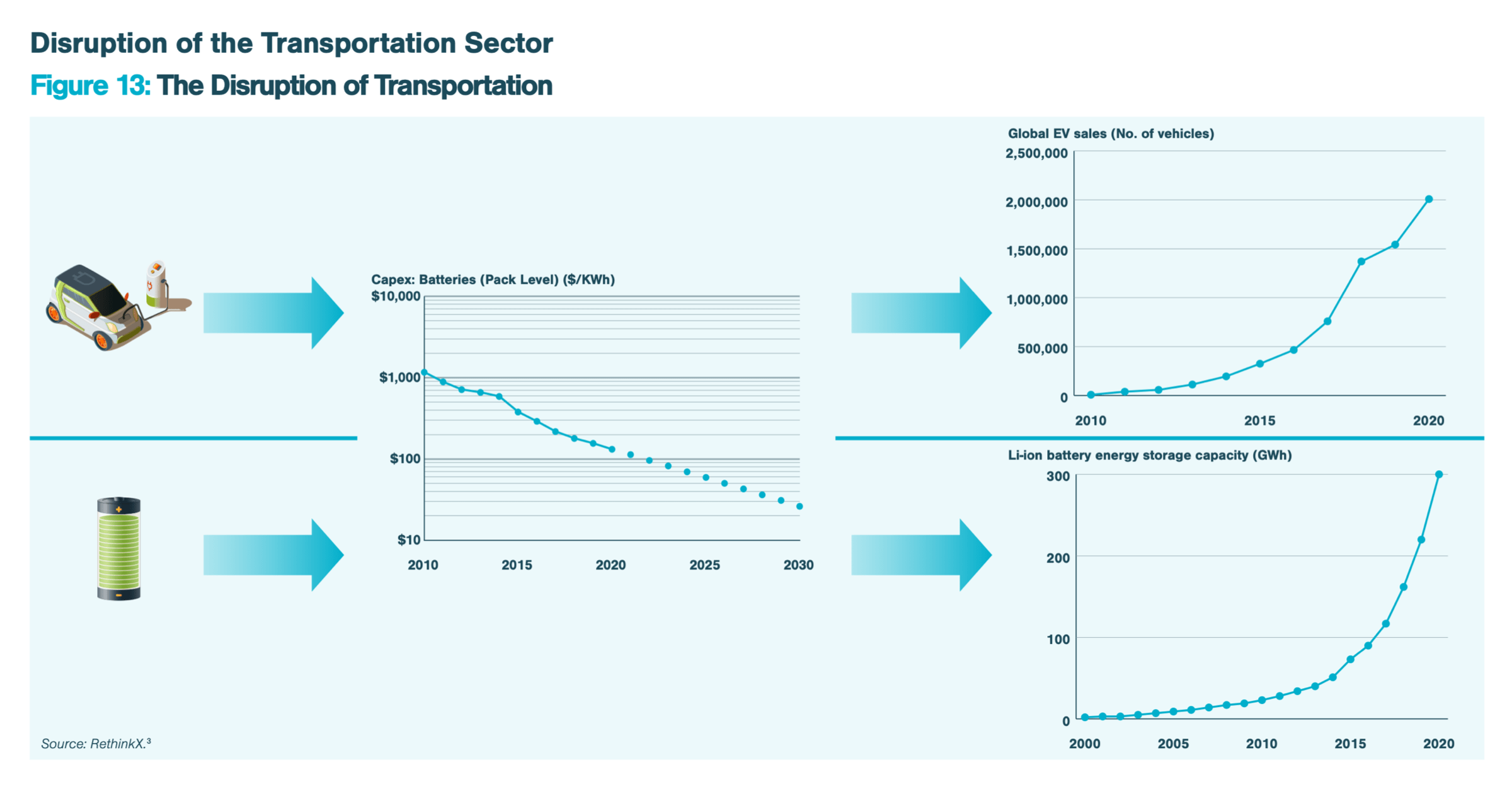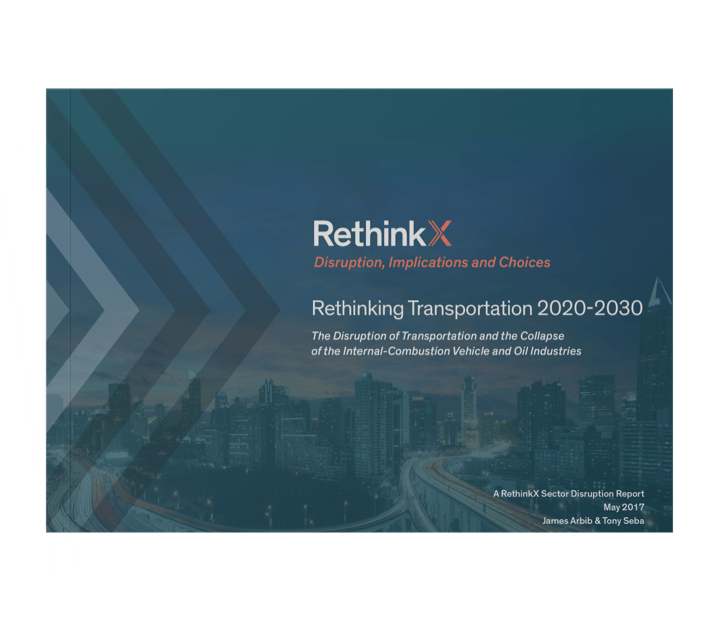Topic / Disruption / In-depth
Disruption of Transportation

Electric vehicles (EV) and autonomous electric vehicles (A-EVs) will create an entirely new business model: Transport-as-a-Service (Taas), that will disrupt and transform our transportation industries exponentially

A disruption happens when new products and services create a new market and, in the process, significantly weaken, transform or destroy existing product categories, markets or industries.
Disruptive technologies emerge when several technologies, each one improving at a different rate, converge at a certain point in time. This makes it possible for new products or services to be developed that outperform and outcompete existing products.
Key features of the transportation disruption:
Our previous research has shown that the transportation disruption will unfold in two phases.
Phase 1:
EVs will displace internal combustion engine (ICE) vehicles driven by rapid cost reductions.
- This disruption means all new vehicles produced will be electric, as powerful feedback loops force ICE vehicle manufacturing to collapse.
- Following this initial phase, a second phase of disruption will be driven by autonomous EVs providing Transport-as-a-Service (TaaS).
Phase 2:
In the late 2020s, ICE and private vehicle ownership will be replaced by on-demand A-EVs owned by TaaS fleets, not individuals.
- As with other disruptions, the costs and capabilities of these technologies have been consistently improving for several decades. They will be the primary driver of the transportation disruption for passenger and freight vehicles alike.
- The operating cost of EVs is already lower than ICE vehicles, and their initial costs are also rapidly approaching parity.
- Because electric drivetrains can last over a million miles (seven times longer than an ICE) in high utilization models (freight and ride-hailing) where vehicles are in service most of the day, the cost per mile of transport will plunge as the cost of the vehicle is spread over a lengthened lifetime.
- Even without autonomous technology, EVs are on track to make on-demand transportation cheaper than ICE-based models, expanding this market.
- Once available, autonomous technology will remove the labor cost of ride service, leading to a cost-per-mile for TaaS 10 times cheaper than privately-owned vehicles today.
The disruption of transportation signals the end of individual car ownership
As the utility of old vehicles relying on fossil fuels and a human driver rapidly approaches zero, most people will stop owning vehicle altogether.
Instead they will access them when needed, have goods delivered autonomously and travel with smaller vehicles when convenient – dramatically reducing the number of cars on the road.

Other disruptions we can expect:
EV ride-hailing
Ride hailing services such as Uber and Lyft give a preview of the impact that TaaS will have.

Electric aircrafts
Beyond road transportation, short-haul aviation (which produces about one-third of emissions from commercial aviation) will be disrupted by the combination of electric aircraft and overnight road trips in A-EVs.

Disruption of shipping & end of associated emissions
Emissions from shipping will also be disrupted by a combination of electrification of ships along with changes in commodity demand. The largest categories of freight, including crude oil, oil products, coal, natural gas, iron ore, steel, automobiles, grain and livestock, will all see demand plummet as a result of the three disruptions.

Disruptions are interconnected, and occurring simultaneously across global sectors
The disruptions unfolding across our energy, food, transportation, information and materials sectors during the 2020s will present new challenges and solve old problems.
By embracing disruption, we have the opportunity to move from a world of extraction to one of creation, a world of scarcity to one of superabundance, a world of inequity and predatory competition to one of shared prosperity and collaboration.

Getting it right - RethinkX predicts disruptions
For over a decade, the RethinkX team has accurately predicted the dramatic cost improvements and market growth of SWB in the energy sector, A-EVs and TaaS in the transportation sector, and PF in the food sector.
The approach RethinkX uses, which is based on the Seba Technology Disruption Framework and empirically validated against dozens of historical disruptions since the 19th century, provides a powerful lens through which to view the full complexity of technology disruptions.


Featured Report
Rethinking Transportation 2020-2030
Download our Rethinking Transportation 2020-2030 Report.












.png?width=732&name=Untitled%20design%20(13).png)




.png?width=732&name=Website%20imagery%20-%20Featured%20Image%201200x628%20(3).png)